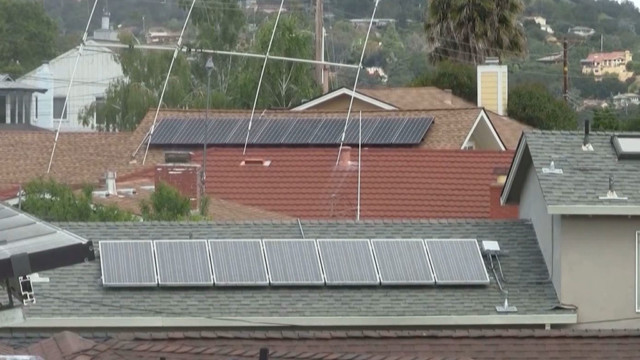U.S. President Trump’s 30 percent tariff on solar panels made abroad is throwing a shadow over Chinese manufacturers.
CGTN’S Mark Niu went to the Solar Summit in San Diego to find out how that’s playing out here in the United States.
Over the past several years, Silicon Valley-based Jordan Redner has purchased 20 solar panels for his home.
But partly due to the needs of his electric car. He’s now planning to install about 14 more.
“It helps me offset anything that the utility company is generating,” Redner said. “It’s clean for the environment. I like the idea of being carbon neutral.”
Redner estimates he’ll break even on his $24,000 investment in about six years.
The rooftops across Redner’s neighborhood mirror his. He’s one of many Californians who also feel it’s worth the investment.
“It’s nice to know in the end that in another five years or so, when the investment’s paid for, you are going to get free electricity as long as you are going be in the same house, which I plan to (be),” said Redner. He went on to add “,it’s probably getting cheaper from my perspective, including installation and all that. So I really haven’t seen it so far, any increases.”
Due to the solar tariff, industry analysts estimate this year U.S. residential customers will face a 3 percent increase in costs and a 5 percent increase for commercial installations.
But customers may not notice, because solar prices have been decreasing by about 10 percent per year.
Another reason the impact of the solar tariff has been lighter than expected is because of an exemption. U.S. President Donald Trump decided to allow the first 2 ½ gigawatts of imported solar cells to be tariff-free.
“Before the tariff hit, it was well known by the industry that this was coming down the pike and so we have 160 plus partners in 30 states, most of those partners started buying a lot of hardware such that they could use that hardware during the course of this year without having the tariff apply,” Bryan Birsic, CEO & Co-founder of Wunder Capital said.
“It might be interesting to note that the trade organization running this on the U.S. government side recommended only a 1 ½ gigawatt tariff but the administration decided on a 2 ½ gigawatt exception to the tariff, so actually the administration came in in support of solar and that allows a good bit of internationally made hardware to be brought into the country.”
Wunder Capital is a technology-enabled lending platform for solar projects.
Although prices have barely been impacted, the waiting period of several months to find out what the Trump administration was going to do did impact jobs.
Birsic believes the tariffs were the worst possible outcome for jobs. There are more than 250,000 people employed in the solar industry and most of them are installing panels.
“This pricing actually hurts the installation, at least the growth of installation,” said Birsic. “And these are relatively high-paying blue collar jobs.”
Birsic also said the tariffs simply weren’t big enough to improve the competitiveness of U.S. solar manufacturers, even though he believes a bigger tariff would have been a bad idea.
Paul Grana discusses challenges to the renewable energy industry /h4>
CGTN’s Mark Niu speaks to Paul Grana, chief revenue officer for Folsom Labs at Solar Summit 2018 in San Diego about the challenges facing the renewable energy industry.
 CGTN America
CGTN America

